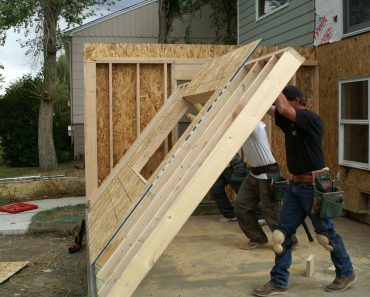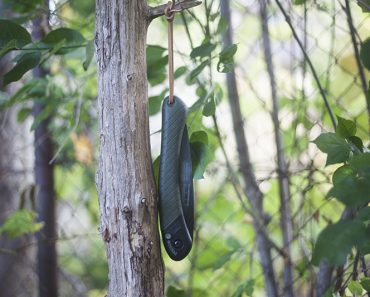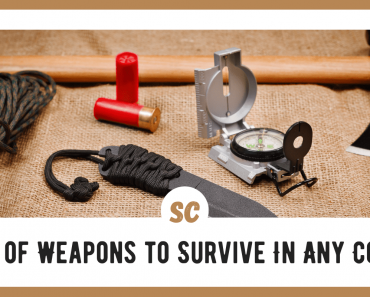One of the great issues I have always had with concealed carry permits and licenses is the absence of any requirement for continuing education, training, and practice in most states.
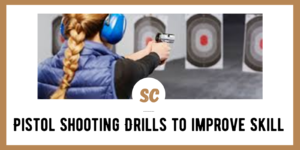
Shooting skills are not innate or ingrained. They must be learned to become proficient and practiced to retain that proficiency. Hence, anyone with a concealed carry license should embark on a regular schedule of pistol shooting drills.
Pistol shooting drills are not confined to time at the shooting range performing actual live fire exercises.
In truth, the time most people spend at the firing range standing in one spot and shooting at a fixed target downrange does little to improve their self-defense skills. Practical pistol shooting drills must include a range of exercises and training that involves both live-fire exercises and the necessary mental skills to stay sharp.
When considering ongoing pistol shooting drills, I like to break the processes down into three basic areas:
- Fundamentals are the most important in my mind. The basics of proper pistol shooting should be reviewed and practiced regularly.
- Live fire training is also important but must include more than simply putting bullets down range at a stationary paper target from a fixed position.
- Mental preparation and knowledge improvement must round out the schedule of pistol shooting drills adopted by any serious shooter.
Why Train Regularly?
If you are a musician, you understand the importance of regular practice to maintain your skills. Athletes understand the importance of regular practice and study to improve their abilities and improve muscle memory continually.
Pistol shooting is no different and requires the same kind of attention to keep your pistol shooting skills sharp.
Keeping Skills Sharp
It takes repetitive and regular practice to maintain learned skills like pistol shooting. We are not born with the necessary skills and training to accurately use a gun as a self-defense tool.
This knowledge and these skills must be acquired and then continually improved. Keeping any kind of skill set intact is a continuing process that requires regular attention.
New Knowledge and New Techniques
Like anything else, there is always something new to learn and practice as a shooter.
New techniques are constantly being introduced that can improve your shooting performance. New products are available that need to be tried and learned. The laws and regulations concerning concealed carry, constitutional carry, and armed self-defense are fluid, and you must stay aware of changes and updates.
Carrying a Weapon for Self-defense Implies Responsibility
When you get that concealed carry permit or decide to carry your gun regularly constitutionally, there is much more to the decision than which gun or holster to use. Strapping on that firearm places a whole new set of responsibilities on you that you must consider.
You must realize the implications associated with arming yourself and assuming the responsibility for your protection and the safety of everyone who may be around you at any given time. Only by training and practice can you be adequately prepared to meet the challenges that may come your way.
Where Do You Start to Improve Your Pistol Shooting Skill Level?
You start with the basics. When I was actively instructing, I insisted that my students start with the most basic of fundamental skills.
In truth, I often said that I preferred teaching someone who had never held a gun to those that were lifelong shooters. It is easier to teach proper fundamentals than it is to unteach a lifetime of incorrect methods and ideas.
Fundamental Pistol Drills
You should consistently and regularly re-examine several fundamental parts of your shooting skills to ensure that the foundation of your pistol drills remains consistent and true. The concepts build upon one another, and without a firm foundation, your pistol shooting skill level will remain inconsistent at best.
Take A Proper Stance
Having your body in the proper relationship to your gun is the basis for repeated and consistent shot placement. Three shooting stances are regularly taught:
- The Bullseye stance is used if you shoot with only one hand on the gun. Your feet are aligned at a forty-five-degree angle to the target about shoulder-width apart.
- The Weaver stance is perhaps the most popular stance among action shooters. To assume this stance, place your feet at a slight angle to the target, your strong hand side arm is straight, and your weak side arm is bent. This allows you to anchor your pistol securely for better control.
- For competitive shooting, many shooters prefer the isosceles stance. Your body faces directly at the target, and your feet are shoulder-width apart. Both arms are straight, and the pistol is gripped in both hands. Many shooters lean their upper body toward the target to maintain good balance.
You should regularly review your stance to ensure that you consistently take a proper position. This can be done by practicing in front of a mirror, videotaping your practice sessions, or having your shooting partner review your stance.
Take a Proper Grip on your Gun
Your grip on your firearm is as important as your stance. Your grip must be consistent, firm, and secure. Only by consistently gripping the gun in the same manner with each style can you hope to deliver on-target shot placement consistently:
- Place the web between your thumb and forefinger on your strong hand firmly in the center of the rear of the grip under the beavertail on your gun.
- Wrap your fingers securely around the grip holding the gun securely. Your grip should be tight but not overly forced. Your trigger finger should point straight down the gun’s frame without engaging the trigger.
- Place your weak hand on the off side of the pistol grip with your thumb pointing down the frame of the pistol. Your weak hand fingers should wrap around the grip under the trigger guard overlapping the fingers of your strong hand.
- Never engage the trigger with your trigger finger until immediately before you are ready to pull the trigger to fire your gun.
A proper grip provides a sturdy and secure connection between your body and your firearm. It helps maintain control to mitigate recoil and muzzle flip, which allows you to more easily re-acquire your target after each shot.
Control Your Breathing
Breathing is fundamental to good shooting. As you breathe, your body responds in different ways and understanding these differences allows you to compensate for these changes as your shoot. Your shooting drills should emphasize proper breathing techniques to ensure consistent shot placement on your targets. Good breathing habits when shooting has several benefits.
- Good breathing keeps your blood oxygenated, promoting sharp eyesight and muscle control. Too many shooters want to hold their breath as they prepare to shoot. This stresses your body and can cause involuntary muscle movement.
- If you add stress to your body with poor breathing techniques, your nervous system responds by raising muscle tension, which can cause tremors and involuntary movement.
- No one can stand completely still or hold a perfect position. You must learn to work with the natural movements of your body for accurate shooting. Proper breathing can make these movements more rhythmic during shooting.
Be aware of your breathing when practicing your shooting, whether you are doing dry fire practice at home or live fire practice on the range. Your breathing techniques should be consistent no matter what type of shooting drill you are using.
Proper Trigger Technique Ensures Consistent Shot Placement
Good trigger technique is a matter of fine muscle control that requires constant practice and attention. Even the placement of your trigger finger on the trigger can affect how your shot hits the target.
In general, the first pad of your trigger finger should be centered on the trigger. The motion of your trigger finger, usually your index finger, must be independent of your grip or your other fingers.
- Placing your trigger finger too far over the trigger and putting the first joint of your finger on the trigger tends to cause you to pull your shots on your strong side.
- Having too little of your finger on the trigger can cause you to push your shoots toward the weak side.
Dry-firing practice is an excellent way to improve your trigger control and technique. There are other aids to developing good trigger control, such as laser systems that can give you instant feedback on your trigger finger actions.
Live Fire Shooting Drills
Live fire shooting drills depend on the fundamentals to build your pistol shooting skills. Nothing can replace time spent on the range perfecting your shooting skills. You cannot hope to become proficient at pistol shooting without spending time on the range.
No matter what type or set of pistol drills you select, they should be practiced consistently and regularly.
The drills I have selected for this article are geared toward the defensive shooting. Most of these drills have a component of multiple target engagement, and each drill stresses shot placement. Some of these drills are used by law enforcement agencies as part of their training.
Phase Five Drill
This shooting drill seems deceptively easy but can prove to be decidedly difficult. To adequately perform this drill, you will need your pistol and holster, a shot timer, 50 rounds of ammunition, and a Phase 5 target. The target can be downloaded at this link.
The drill uses two targets with diminishing sizes of targets that must be engaged progressively during a timed round from your holster. Standing three yards from the target and with your shot timer set to a par time of 2.5 seconds, draw and fire one shot each time the timer goes off.
Each phase consists of ten shots. Shoot the targets in numerical order as they are shown on the targets. Once you master this drill at 3 yards, back up to 5 yards, then 7 yards, and so forth. Only an advanced shooter can easily complete this drill and keep all 50 shots on the targets with any consistency.
Dot Torture Drills
I love shooting dot torture drills. They are challenging and fun. If you want a bit of competition with your friends, challenge them to a couple of rounds of the dot torture drill. You will soon find that your skills sharpen.
For this drill, you will need your pistol, holster, extra magazines, and 50 rounds of ammo.
A shot timer is not strictly necessary, but it can add a level of stress to the drill that can improve your shooting. Start with 10 rounds loaded in your magazine. Select your distance, draw your pistol and put five controlled rounds in the first dot. Re-holster your pistol and start the next round.
The rounds progress through several drills that work on different shooting skills. The 10 rounds of fire are:
- Five rounds of slow fire
- Draw and fire one round on target two with each draw.
- Repeat stage two for dots three, four, and five.
- For targets six and seven, draw your pistol from your holster and put two rounds into each dot.
- Dot eight uses your weak hand to put 5 rounds on the dot. Using your weak hand during training is important to balance your training.
- For the next round, you will draw your firearm, put one round on dot nine, drop your magazine and reload, then place one round on dot ten. Repeat this round three times.
Performing this drill can help you diagnose any problems you have with your grip, stance, and your holster techniques. This is not a speed challenge and should be shot deliberately and carefully.
El Presidente Drill (El Guapo Drill)
If you are like me and prefer to carry a compact or sub-compact pistol as your everyday concealed carry firearm, the El Presidente Drill is a great way to train with your limited-capacity pistol. There are many variations on how to run this drill. This is mine since my Glock 43 only holds 6 rounds. The El Presidente Drill is a variation of the El Guapo Drill.
To practice this drill, place three target stands downrange with two silhouette targets on each stand. Start with your concealed carry firearm holstered and your back to the targets. Turn, draw your pistol and fire two shots into the first target and two shots into the second target on the first target stand. Reload and fire two shots into the next pair of targets and repeat another two shots for the third pair of targets.
This drill is great for working on target transitions and can be varied to make things more interesting. Designate one target as a friendly, and have your shooting buddy mark one of the six targets while your back is turned. If you put rounds on the hostage target, you lose the round.
The William Drill (Bill Drill)
There are times when speed is as important as accuracy. You need to inject some drills into your ongoing training emphasizing speed while still working on accuracy. The William drill gives you some of each of these types of training. Managing recoil is almost an art, and the William drill will help you learn how to manage recoil to your advantage.
This drill is best run using a standard silhouette target at seven yards. Use your shot timer to sound a start tone, and then, as quickly as possible, draw your gun from your concealed carry holster and put five shots into the center ring of the target. Immediately transition and place one shot in the center of the head of the target.
The goal of this drill is to put all five of the first shots into the center ring on your silhouette target and one shot centered in the head of the target in the shortest amount of time. You will soon learn to balance speed and accuracy to achieve the best results.
The Mozambique Drill
It is important to train for almost any situation. There may be an instance when you face an adversary that is close to you and doesn’t go down with center-mass shots. In such a defensive encounter, the Mozambique drill is useful for training. This is often called a “failure to stop” drill. I learned this drill from a former delta force operator.
The object is to place two shots into the center mass of your target and then one shot into the head area of the target to ensure the target stops, hence the name, “failure to stop” drill. In almost any instance, two rounds to center mass will stop any threat. However, a headshot is an almost sure stop on any target.
Some instructors use this drill to teach a retreating action to keep a threat at a safer distance. To practice this variation, start with the target at 3 yards and as you draw and shoot your three shots, retreat to at least seven yards by the time you fire the third shot at the head of the target.
Be Creative With Your Training
Don’t fall into the habit of performing the same pistol drills repeatedly. Vary your training and introduce new drills regularly. There are many pistol shooting drills on the internet, and many-use targets that can be downloaded and printed at home.
If you identify a weakness in your shooting skills, find a drill to help you improve that part of your shooting to maintain the highest level of performance possible.



















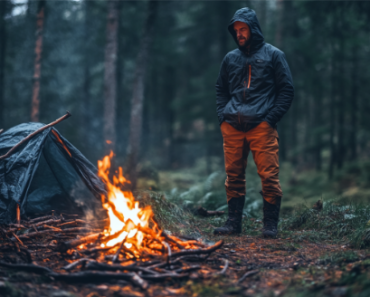
![Surviving In Your Vehicle [PODCAST]](https://survivalcove.com/wp-content/themes/mts_sociallyviral/images/nothumb-sociallyviral-featured.png)
